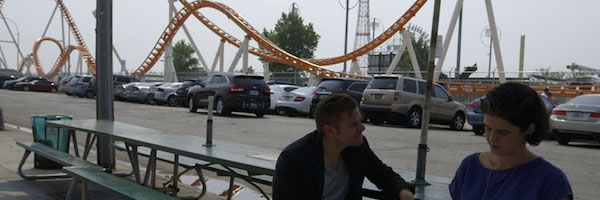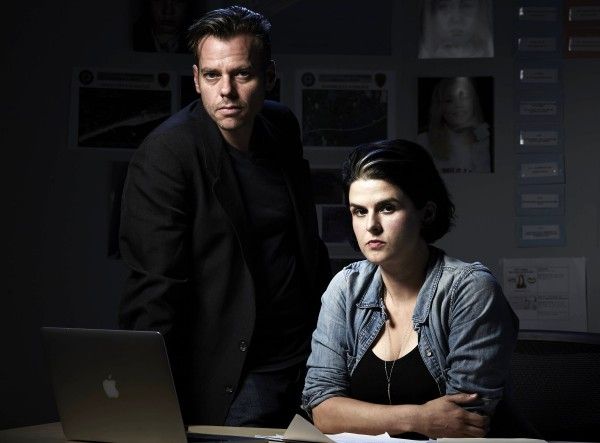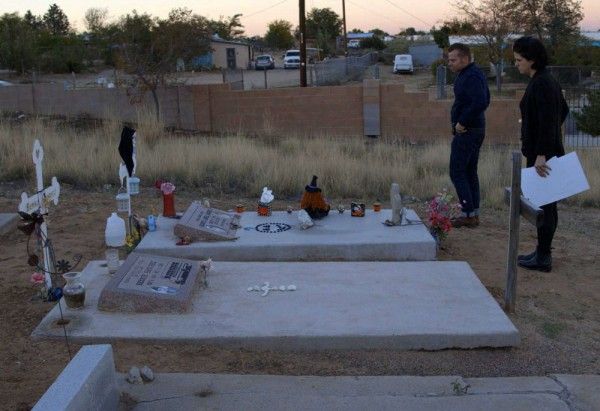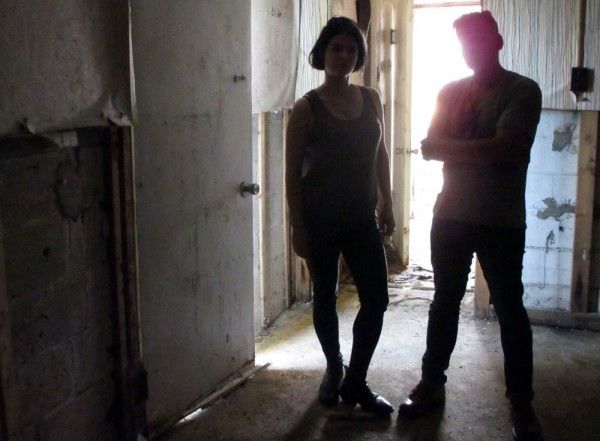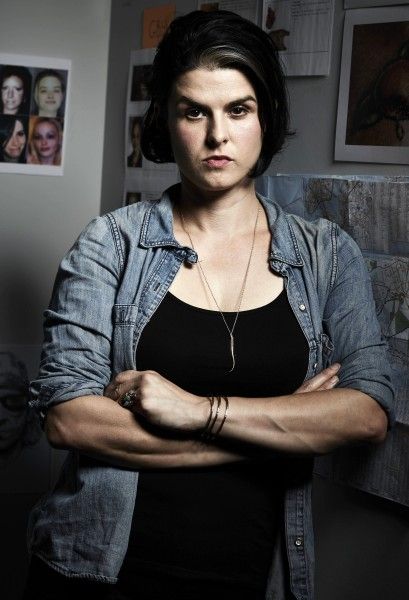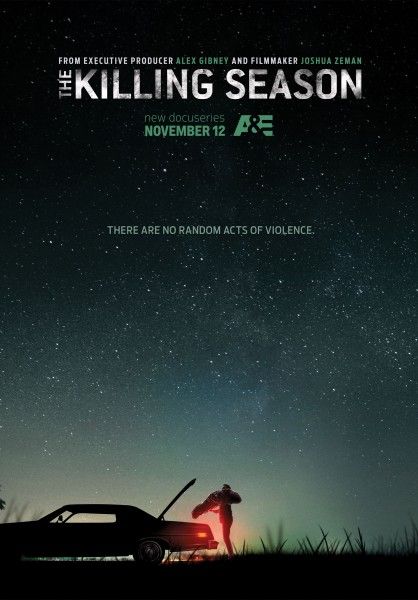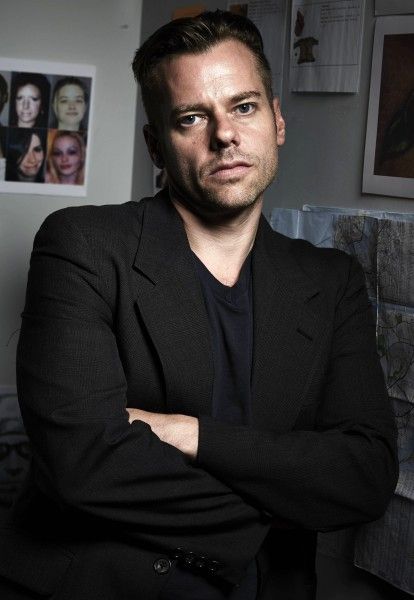From executive producer Alex Gibney, the gritty and, at times, terrifying eight-episode A&E docu-series The Killing Season follows documentarians Joshua Zeman and Rachel Mills, as they investigate the unsolved serial killer case of ten dead sex workers discovered on Gilgo Beach, Long Island. Forging relationships with cyber-sleuths, journalists, and victim’s families, Zeman and Mills uncover unsettling connections that suggest Long Island is just the beginning.
During this exclusive phone interview with Collider, executive producers Joshua Zeman (who also directed the series) and Rachel Mills talked about how The Killing Season came about, what Alex Gibney brought to the project, that they originally set out to make a feature documentary before realizing how much content they had, going down the rabbit hole, why it was important to them to humanize the sex workers at the heart of this, what individuals can do to help change things, and whether they might continue to explore this for another season.
Collider: How did this series come about and what brought you guys together, in making it?
JOSHUA ZEMAN: I had made Cropsey, which was about serial murder of a different nature, involving kids. I have to admit that I wanted nothing to do with serial murder, after that experience, because just talking with the parents of children who disappeared and were murdered or have never been found, there’s nothing quite like that experience and it really takes a toll. People kept telling me, “Oh, you have to make a serial killer documentary,” like that was what I had intended to make. I love true crime, but that wasn’t really the point of what I was trying to do. I was just trying to make a movie about a series of murders in my hometown that had affected me. So, I really shied away from it, as much as people wanted me to do that. And then, a few years later, this case broke.
Originally, I was born in Long Island and spent a little bit of time there before moving to Staten Island. First, they had found four sex workers in December of 2010, and then a few months later, they found six more sex workers. In six months, you had ten bodies found along this desolate highway, which is just such carnage. I think we all had this idea, based upon this constant bombardment of Law & Order and CSI, that these cases are going to get solved very quickly. We thought it was going to get solved pretty quickly. But then, in year one, there were no arrests, and in year two, there were no arrests. And then, the police stopped communicating with the public and, suddenly, you had this amazing explosion of speculation. At that point, we started to pick up the camera and say, “What’s going on here?” We started to hear grumbles of police corruption and political maneuvering. Experts couldn’t figure out if there were one or two killers. I think it became an opportunity for us to approach a subject that I was very sensitive about. I wanted to show people the trust behind our fascination with serial killers to show an ugly and, in my eyes, more horrifying reality.
And watching you guys go further and further down a rabbit hole that it seems like you’ll never get out of is equally terrifying to watch?
ZEMAN: I really love the filmmaker/journalist going down the rabbit hole story. I’ve been there. Movies like Zodiac, I totally sympathize with. Suddenly, it’s 12 hours later and you have to pull each other out of the rabbit hole.
RACHEL MILLS: Yeah, and I don’t have much of a true crime background. I’m more of a documentary filmmaker, so I came into this being fascinated, like probably every single person, with serial murder. I was really intrigued by these cases and did really want to know why they are unsolved, especially in Long Island with so many bodies and five still unidentified. Speaking of rabbit holes, I wanted to look at these cases, but then we slowly realized that it’s not just the crimes themselves. There are bigger implications and bigger societal impacts than continue to create these kinds of crimes and continue to have these crimes remain unsolved. We get into federal databases not having to be mandated by the 20,000 plus law enforcement agencies around the country. The crimes themselves are extremely tragic, and it was emotional for me, for sure, speaking with these family members who have very little answers and definitely more questions.
You must get to a point where you’d really like to be the people to provide some of these answers, but at the same time, you can’t expect that you’re going to be the ones who can get those answers, after all these years.
MILLS: Yeah, and that was one reason why we were able to form relationships with so many of these families ‘cause we were very honest with them. It took us three or four years to finish this series. I just spoke to Sarah a couple of days ago, who was Maureen Brainard-Barnes’ friend and the last person to see her alive. I’ve been speaking to her for three years. There are a lot of other shows out there that would cover such material in a different way, that I probably would not. Hopefully, that comes across in the sincerity. We were honest with these families and told them, “I can’t tell you that we’re going to solve this. I can tell you that we can hopefully give you more exposure and continue the conversation on a larger scale.”
Usually, when people explore these kinds of cases, you only hear about the sex worker aspect, but you really make these women human. Why was it important to you to humanize who these individuals are?
ZEMAN: It’s victim blaming, like somehow the victim did something to get them into this position, which is just a weird thing we do. I know why we do it. Basically, we blame the victim in a way to waylay our fears that this could happen to us. If we continue to call these women sex workers and prostitutes and somehow they deserved this, then if we’re not sex workers, we have nothing to worry about, but that’s not really the case. The real root of a lot of what we’re talking about stems from sexual abuse, and the sex work is a means to an end, in a lot of cases, for drugs. It’s much more of a complex social issue, and thankfully those issues are coming up now. No little girl ever grows up wanting to be a sex worker. It just doesn’t happen like that. That being said, I make no moral judgments against sex work. I believe it should be legalized because we need to bring it out of the shadows. The head of Back Page got arrested, which brings up a whole other group of issues. I was very pleased to see that these women didn’t need to rely on pimps anymore, and they could run their own business. If their business was selling sex, that’s fine. The problem is that it gets conflated with a whole bunch of other issues, like human trafficking and underage sex work.
When you started down this path with this series, what exactly did you think you’d be making and how different did it end up being?
ZEMAN: That’s a good question.
MILLS: Josh and I were working on this other documentary, called Killer Legends, and he would go to Long Island, which is when he met Super, the escort that we drove around on Long Island, and did our first interviews with Bob Kolker, who wrote Lost Girls: An Unsolved American Mystery and who’s been a great supporter of us, to this day. It’s such a big case. It’s crazy that it’s not solved. So, we went into it thinking that we would be making a feature documentary. That’s my background and that’s Josh’s background, to a degree. Once we did start going down that rabbit hole and couldn’t stop the gravity of that, we realized that 120 miles away in Atlantic City, there were eerie similarities to another case that happened nine months prior to Maureen Brainard-Barnes going missing in 2007, and that led us down the Eastern Seaboard. There are all of these connections, across the country.
I can also say that having Alex Gibney at Jigsaw was a huge relief to us because when Josh and I did decide to pursue this as a docu-series, we were nervous that people would turn off to such a dark world that centers around sex work and everything that is around that industry, and he really did persuade us to embrace that and really go with that. I think that really opened us up to dealing with some of the bigger issues that we deal with in the series. It was interesting. I didn’t know that serial murder among sex workers has increased, I think, 70% since the ‘70s, and that’s because we live in this trackable society, but they are a small population who are, themselves, trying to evade law enforcement. They’re using burner cell phones, they’re using Back Page, and they’re dealing in cash transactions, so they’re one of the few populations that isn’t trackable and serial killers know that. That’s why they’re going after sex workers in such large numbers. They’re not going after the runaways or the hitchhikers anymore because we are so trackable.
ZEMAN: Basically, we didn’t think anybody was going to want to do an eight episode show about murdered sex workers, but Alex Gibney was like, “No, if those are the victims, then you need to lean into the pain.” So, when we looked at all of the unsolved serial murders of sex workers across the country, he went, “Oh, my god, that’s horrific!”
As you kept getting deeper and deeper into this and you realized just how big of an issue this was, how did you decide where to stop and draw the line?
ZEMAN: That’s the tragedy, right? We just hit the tip of the iceberg. We could have gone to Las Vegas, where they have some unsolved sex worker cases. We could have kept going. It’s one thing to keep showing all these unsolved murders, but you have to give an audience some active ways to change things, or else it becomes this death march. You have to arm them with ideas for how we can change it. When you think about it, it’s just crazy that out of the 17,000 to 20,000 law enforcement agencies in the United States, not one is federally required by law to submit its murder date to one centralized database. I thought law enforcement was putting our information into super-computers, 24/7. How could murder not be the one thing that’s federally mandated? But, it’s not. As a result, we miss a lot of connections in linking murders together. We don’t know how to do deep dive data because we’re just so bad at collecting it.
Once you had all of the footage, how did you put it together into a coherent TV series?
ZEMAN: We did months and months of research, and in that research, we knew the storyline. We did all of this research into Long Island and we knew we’d have maybe three to five episodes about Long Island. But more and more, we knew in our research that people kept saying, “You have to look at this Atlantic City case. You can’t talk about one without talking about the other. And if you’re going to look at this Atlantic City case, you have to look at this Daytona case. And if you’re going to look at those two cases, then you have to look at the case that is the most modern-day equivalent to Long Island, which is Albuquerque.” So, we had that basic sketch. And then, we had that episode where we suddenly go to Charleston, West Virginia because Neal Falls had been killed by a sex worker. That was unfolding, right at that moment. We just hopped on a plane. A lot of it was scripted, but a lot of it was unfolding. That’s why it took two years to make a series, which is unheard of, in terms of this true crime TV stuff.
MILLS: We spent a lot of time in the edit room. We were trying to make a very long documentary on a television schedule, which is very difficult for the network, for us, and for everyone. But we knew we wanted to go where the story was and we knew we wanted to have enough breathing room to go to West Virginia, or to round back to Long Island, at the end of Episode 8.
ZEMAN: Which we had no idea was going to happen. We had no idea that the police chief of Long Island was going to get arrested, or that they were going to demand the resignation of the D.A., in part because of dragging their heels in the Gilgo Beach case. We couldn’t believe it.
How many times did you guys actually think you might truly get the answers you were seeking, only to be led down another path in another direction?
MILLS: All the time! WebSleuths.com is a huge component of the series. We would think, “Well, maybe we’ve gotten to the bottom of this rabbit hole. Let’s go on Web Sleuths and see what they’re talking about or if there’s some connection.” But then, there would be another section of the rabbit hole that would open up, that you didn’t even know was there. Web Sleuths is a great tool. They’re not really solving crimes, left and right, but we live in the era of crowd-sourcing and it’s crowd-sleuthing. They’re a great place for people to go and get involved, and I hope that they do. We push people there, after each episode, to hopefully continue this conversation.
ZEMAN: I knew about the idea of the rabbit hole from Cropsey. I was familiar with it because we did a little bit of that on Cropsey. It doesn’t matter where the rabbit hole leads, necessarily. By hanging out with Super, even though she never becomes a victim herself, you learn a lot about how the world’s oldest profession has changed dramatically with the advent of the internet. While everybody is like, “If they’re using Back Page, there must be some link somewhere, or some IP address that somebody can be caught on,” that’s not the case. The internet makes these dealings a lot more anonymous, and therefore a lot more dangerous. All of these rabbit holes tend to provide a context that allows you to understand a larger facet of the crime.
Where do you guys go from here? Would you like to do another season of this show, or do you want to take on something with rainbows and unicorns and puppies next?
MILLS: It’s funny that you say that because I’ve used that same line about puppies and unicorns before. I think there’s still so much to mine in this space of true crime and this space of these sorts of crimes, but we have no idea about Season 2.
ZEMAN: New clusters become apparent, all the time. If the police don’t even know about it, maybe we really can save some lives and make a difference. Maybe we can show law enforcement agencies out there how valuable the data is, if they really just knew how to mine it. There are five unidentified individuals, out of the ten in Long Island. I think this case would be a lot less solvable, if they knew who those ten people are and they knew all of their identities. Not knowing at least 50% of the victims means that that’s a lot of potential clues that are out there. And there are some very specific and interesting facets, like Asian Male, who was a guy dressing up in women’s clothes and had a limp. That’s something to go on. There’s Jane Doe, whose legs were found on Fire Island in 1996, or the fact that there’s a mother and a toddler, who were very deliberately separated. There are a lot of interesting clues to mine, if you have the full cooperation of the police, in making them release all of the information that’s there. We actually do have the possibility of doing some good here, which is exciting to think about.
The Killing Season airs on Saturday nights on A&E.

